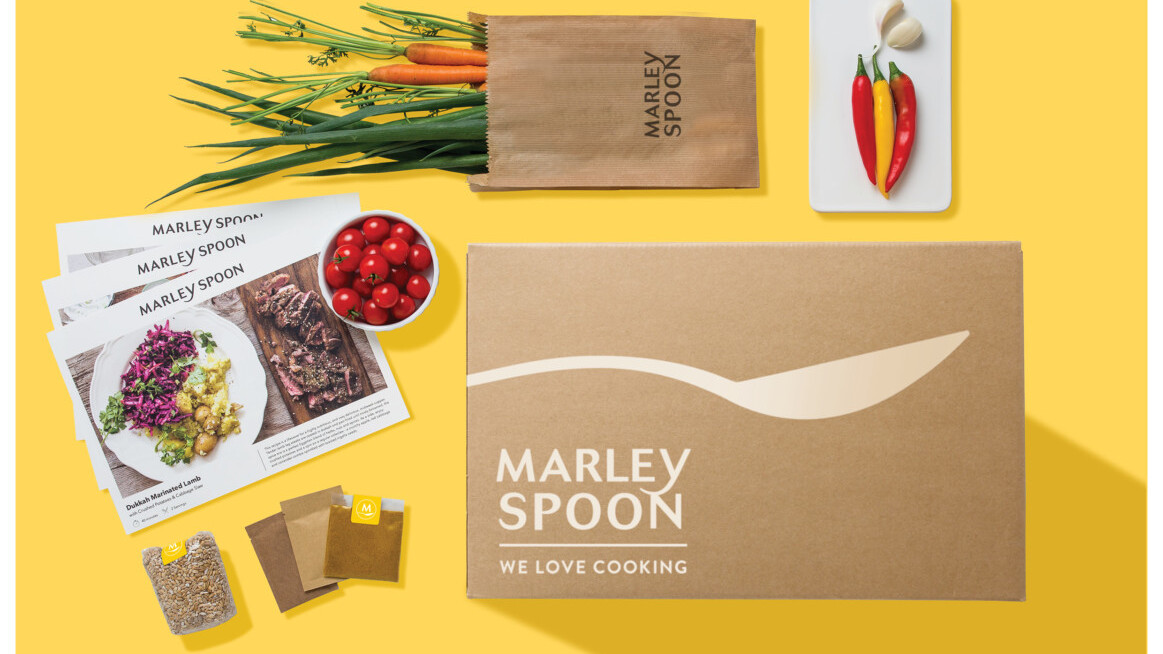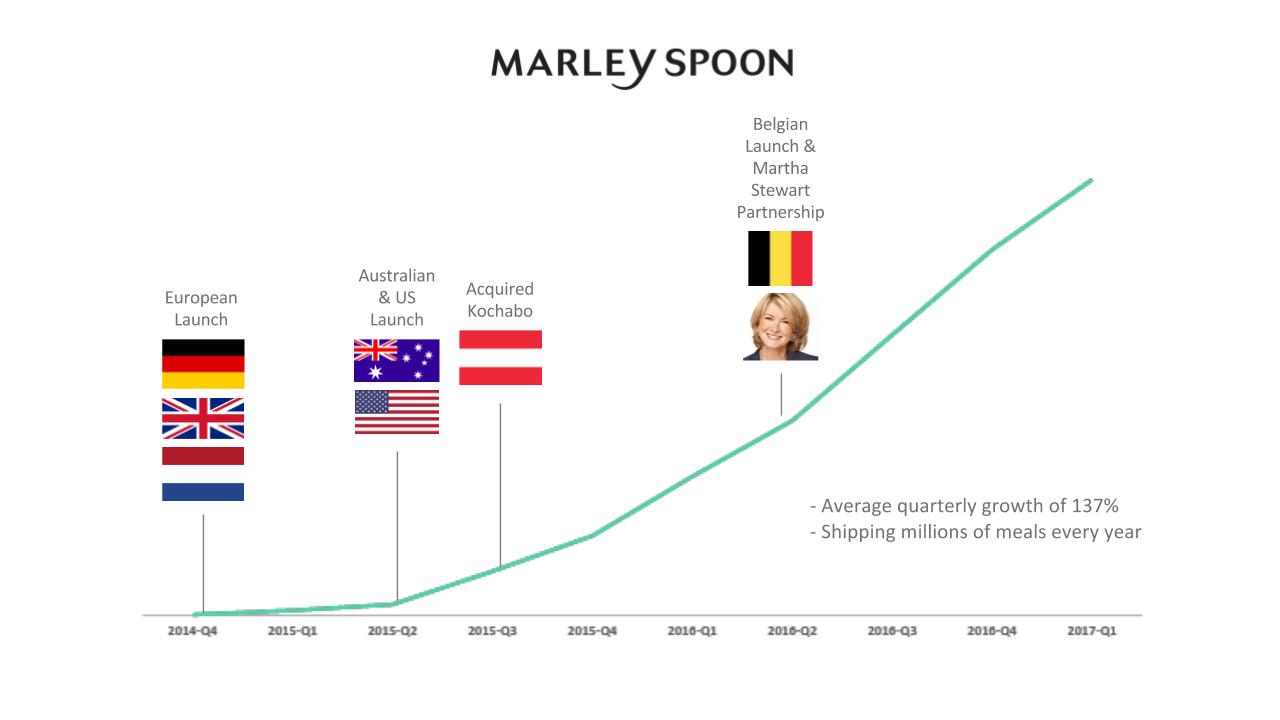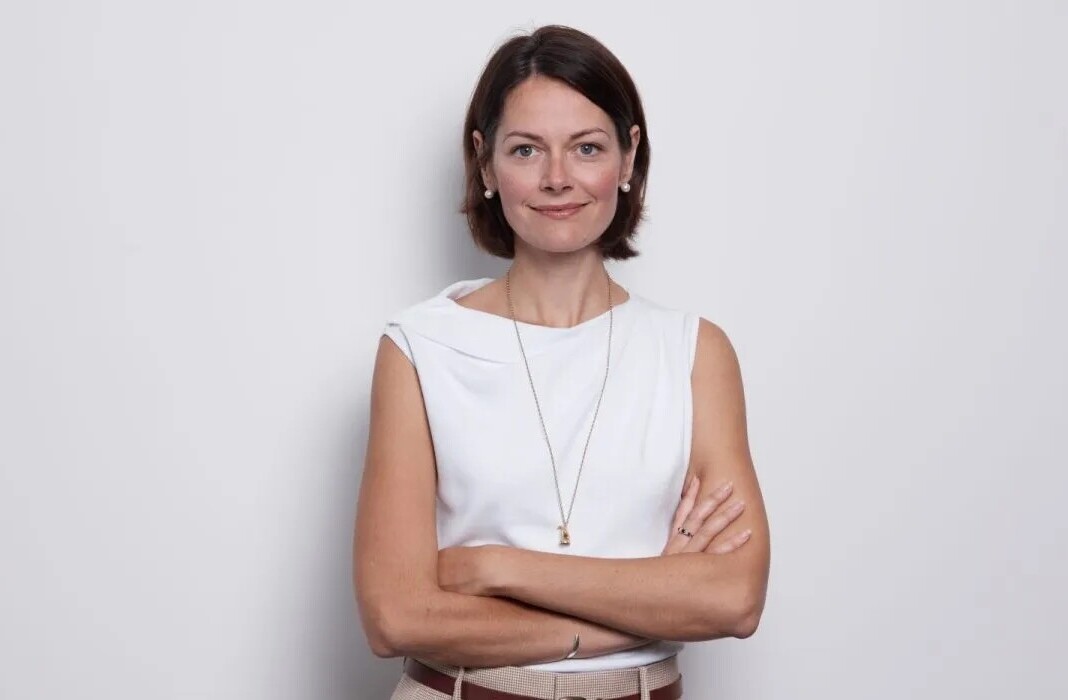
Hero Metric is a new four-question format we’re doing about startups finding and influencing a defining metric that helped to really grow their company.
We met with Fabian Siegel, co-founder and CEO of Marley Spoon, to find out how using slow growth tactics – the turtle approach – can actually help you get ahead of the competition. In a saturated market, Siegel dares to be different and it’s paying off. This is his story, use it to your advantage.
The company
Marley Spoon brings delightful, market fresh and easy cooking back to the people – creating a simple weeknight cooking solution. When I used to go to the supermarket, I would walk in, see all these beautiful products lying there – all the meat, fish, vegetables – I could cook anything I wanted, but in the end I would walk out of the supermarket with the same things again and again. So, we thought, “Hey, let’s create a weeknight cooking solution that is diverse, easy, and convenient.”
We offer our customers the ability to choose from ten recipes, and out of these ten recipes they can say, “I want to cook these three or four”, which is the average number of dishes our customers choose to cook on a weekly basis. Then we send a box to their home, and in that box they receive the ingredients, in exact quantities, and the recipe cards. Basically everything you need to cook an amazing meal in 30 minutes – all they need at home is salt, pepper and oil.
The main problem with supermarkets, which many people are not aware of, is that the supermarket model is terribly wasteful. Supermarkets throw away up to 30 percent of fresh products because they can’t sell them. But when you think about it, on top of the supermarkets’ 30 percent, the consumer also throws away 20 percent of the fresh produce they buy because supermarkets sell customers more than they need. Somebody needs to pay for all of that waste: You, the consumer, you pay for that waste.
And that’s the beauty of our business model at Marley Spoon. Our business model ensures that we only buy what we need, so we have no waste, and we only send they customer what they need, so they have no waste. And this is why we’re not only 10 times better than supermarkets, we’re also cheaper because we don’t incur any waste.
The alternative to offline, ‘bricks and mortar’, supermarkets is online supermarkets, such as Amazon. An online supermarket can take care of your pantry and daily essentials, whilst Marley Spoon takes care of your weeknight cooking needs. Then on top of that, you’ll still have a couple of nights a week when you can eat out at a restaurant or order in using a service like Delivery Hero.
The metric
If you look at the reason why we’re growing so fast, it’s because we have this massive industry, groceries, as well as this current channel switch situation, which you only have once in history for each vertical. We’ve seen this happen in the last 15 years for fashion, for books, for electronics. So you see this massive growth coming out of existing behavior, the switch in the channel from offline to online, and we are benefitting from that behavior change right now. That is, therefore, why we can grow so fast.
First, to assess our growth, we of course look at revenue, meals sent, and the percentage that we grow. But I think the core metric that we have realized is essential to our growth is the cohorts. So, of the users that we acquire, how many of these users don’t only try the product once but really shift their behavior to cooking with us every week? We can see a differentiation between these ‘sticky’ customers, and those who are just trying us out once, very clearly in the cohorts.
We have this group of customers that are cooking every week anyway, families, older couples, people that have a structured life. They discover us and suddenly are cooking with us regularly and don’t go to supermarket anymore. And what they used to spend every week in the supermarket now partially shifts to us on a weekly basis. And this is what has been instrumental to our growth. At this point in time 90 percent of our revenue is actually from existing customer revenue.
And that’s when you can grow a business very, very fast because every new user base that you put on top actually sticks because you have the old customers that still generate most of your revenue.

The moment
When we started this business, we started with a one-off model, rather than a subscription model. We offered a service where people could buy one box and if they liked it they could buy another box. And what we realized is that while people loved the product and said it was an amazing experience, they only wanted to use it, say, every year for their anniversary, but it turned out that that frequency was way too low.
When you look at the cohorts, we had cohort retention but it was very, very low, and the order frequency was also very low. So, therefore, the business didn’t grow. It was only when we started to offer an alternative to the one-off, a subscription service, that we really saw the business take off. It attracts the right customer, the customer that’s cooking already, and provides them with a better solution. This was the key moment that we realized what could improve the cohorts, so we had to change the business model.
It took us six months to realize that the original business model didn’t work and to figure out what needed to be done differently. It took us three months to implement the changes, and nine months after initial launch we launched the model that we’ve had ever since.
The solution
So, to be honest, while we’re growing fast, we don’t try to grow fast. We actually believe in slow growth. We call this the turtle approach. We want to very, very, very slow, but maintain continuous growth, and in the end we feel like we might be fast. So, we never push growth, we never spend a lot of money in marketing. In our industry, sometimes new customers get a voucher to try the product for the first time. We’re not the only company in the space, there are also others. Our voucher amounts are always the lowest in the market compared to all the others. We, in a way, don’t want fast growth, we want the right customer.
I’ve always been focused on defensive spending on advertising, low voucher amounts and slow growth. If we focus on that, we focus on quality customers, and quality customers give you quality cohorts. Quality cohorts are what actually drives growth because adding new customers doesn’t drive growth if all of them just go away after ordering one box. If none of them are actually there because they care about what you do, they just want a cheap product that’s 50 percent discounted but they have no intent to stay.
We don’t do stuff that others do just because they do it, we only do stuff that makes sense to us, and if it doesn’t make sense we don’t do it. To give you an example, sometimes it also leads to unusual steps. We launched a service in UK, and we then we stopped operating in the UK because it didn’t work for us. We couldn’t make the cohorts work. To us the business model wasn’t sound. And we have no clue how others do it, they must know something we don’t know or they must be much better than we are, which is fine. But we decided we don’t understand it, it doesn’t make sense to us, so we’re not going to do it. Maybe we’ll do it later, maybe we’ll come back once we find a way to understand it.
We’ve been growing explosively, not because we wanted to push growth, but quite the opposite, we always wanted to make sure that we actually grow slowly and steadily, and only do things that make sense, and if they don’t, we’d rather stop growing and shut things down.
As a last piece of advice to (future) founders, Siegel recommends to always fund the company well. No company failed because they had too much capital. Always make sure you have more money than you need.
Get the TNW newsletter
Get the most important tech news in your inbox each week.





